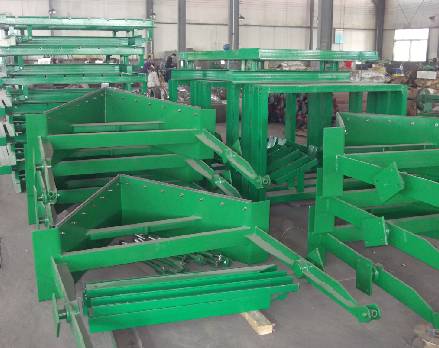 Afrikaans
Afrikaans  Albanian
Albanian  Amharic
Amharic  Arabic
Arabic  Armenian
Armenian  Azerbaijani
Azerbaijani  Basque
Basque  Belarusian
Belarusian  Bengali
Bengali  Bosnian
Bosnian  Bulgarian
Bulgarian  Catalan
Catalan  Cebuano
Cebuano  Corsican
Corsican  Croatian
Croatian  Czech
Czech  Danish
Danish  Dutch
Dutch  English
English  Esperanto
Esperanto  Estonian
Estonian  Finnish
Finnish  French
French  Frisian
Frisian  Galician
Galician  Georgian
Georgian  German
German  Greek
Greek  Gujarati
Gujarati  Haitian Creole
Haitian Creole  hausa
hausa  hawaiian
hawaiian  Hebrew
Hebrew  Hindi
Hindi  Miao
Miao  Hungarian
Hungarian  Icelandic
Icelandic  igbo
igbo  Indonesian
Indonesian  irish
irish  Italian
Italian  Japanese
Japanese  Javanese
Javanese  Kannada
Kannada  kazakh
kazakh  Khmer
Khmer  Rwandese
Rwandese  Korean
Korean  Kurdish
Kurdish  Kyrgyz
Kyrgyz  Lao
Lao  Latin
Latin  Latvian
Latvian  Lithuanian
Lithuanian  Luxembourgish
Luxembourgish  Macedonian
Macedonian  Malgashi
Malgashi  Malay
Malay  Malayalam
Malayalam  Maltese
Maltese  Maori
Maori  Marathi
Marathi  Mongolian
Mongolian  Myanmar
Myanmar  Nepali
Nepali  Norwegian
Norwegian  Norwegian
Norwegian  Occitan
Occitan  Pashto
Pashto  Persian
Persian  Polish
Polish  Portuguese
Portuguese  Punjabi
Punjabi  Romanian
Romanian  Russian
Russian  Samoan
Samoan  Scottish Gaelic
Scottish Gaelic  Serbian
Serbian  Sesotho
Sesotho  Shona
Shona  Sindhi
Sindhi  Sinhala
Sinhala  Slovak
Slovak  Slovenian
Slovenian  Somali
Somali  Spanish
Spanish  Sundanese
Sundanese  Swahili
Swahili  Swedish
Swedish  Tagalog
Tagalog  Tajik
Tajik  Tamil
Tamil  Tatar
Tatar  Telugu
Telugu  Thai
Thai  Turkish
Turkish  Turkmen
Turkmen  Ukrainian
Ukrainian  Urdu
Urdu  Uighur
Uighur  Uzbek
Uzbek  Vietnamese
Vietnamese  Welsh
Welsh  Bantu
Bantu  Yiddish
Yiddish  Yoruba
Yoruba  Zulu
Zulu head pulley tail pulley for belt conveyor
Understanding Head and Tail Pulleys in Belt Conveyors
Belt conveyors are essential components in various industries, facilitating the movement of materials from one point to another. They comprise various elements, among which head and tail pulleys play crucial roles in the overall functioning of the system. Understanding these components is vital for engineers and operators alike as they contribute significantly to the conveyor's efficiency and reliability.
What are Pulleys?
Pulleys in a belt conveyor system are cylindrical components that guide and support the conveyor belt. They serve two primary purposes to drive the belt and to provide tension. The head pulley, located at the discharge point of the conveyor, is responsible for driving the belt forward. In contrast, the tail pulley, situated at the loading end, helps to return the belt back to the head pulley.
Head Pulley The Powerhouse of the Conveyor
The head pulley is typically larger in diameter compared to the tail pulley. Its primary function is to provide the necessary traction for the conveyor belt as it moves the material being transported. When the motor drives the head pulley, the belt wraps around it, converting the motor's rotational energy into linear motion.
Several factors influence the effectiveness of the head pulley. The diameter, for instance, affects the belt’s contact area, which in turn influences the friction and the ability to convey materials without slippage. Additionally, the shape of the head pulley can vary, with options like crown or flat designs. A crowned pulley helps keep the belt aligned and reduces the risk of misalignment during operation.
head pulley tail pulley for belt conveyor

Maintenance of the head pulley is crucial. Regular inspection for wear and tear ensures that it performs optimally. If the head pulley becomes worn or damaged, it can lead to inadequate tension and increased wear on the conveyor belt, resulting in costly downtimes and repairs.
Tail Pulley The Stabilizer of the System
While the head pulley is responsible for moving the belt, the tail pulley plays an equally significant role by providing tension and supporting the return loop of the conveyor belt. Located at the opposite end of the conveyor system, the tail pulley helps to keep the belt taut, preventing sagging that could cause material spillage or belt misalignment.
Like the head pulley, tail pulleys can also come in various designs. Tail pulleys may feature a smooth or rubberized surface to ensure that the belt does not slip during operation. Additionally, they often include modifications to facilitate easier maintenance and replacement when necessary.
The Importance of Proper Alignment and Maintenance
Proper alignment of both head and tail pulleys is essential for the longevity of the conveyor system. Misalignment can lead to uneven wear of the belt, increasing maintenance costs and operational inefficiencies. Routine inspections and adjustments should be made to ensure that both pulleys are correctly aligned and functioning as intended.
In conclusion, head and tail pulleys are integral to the successful operation of belt conveyors. They not only drive and support the belt but also contribute to the system's overall efficiency and reliability. Understanding their functions and maintenance requirements can significantly enhance the performance and lifespan of a belt conveyor system, thereby ensuring smooth operations in material handling processes. Investing time and resources into the upkeep of these critical components is essential for any business relying on conveyor systems.
-
Revolutionizing Conveyor Reliability with Advanced Rubber Lagging PulleysNewsJul.22,2025
-
Powering Precision and Durability with Expert Manufacturers of Conveyor ComponentsNewsJul.22,2025
-
Optimizing Conveyor Systems with Advanced Conveyor AccessoriesNewsJul.22,2025
-
Maximize Conveyor Efficiency with Quality Conveyor Idler PulleysNewsJul.22,2025
-
Future-Proof Your Conveyor System with High-Performance Polyurethane RollerNewsJul.22,2025
-
Driving Efficiency Forward with Quality Idlers and RollersNewsJul.22,2025





























